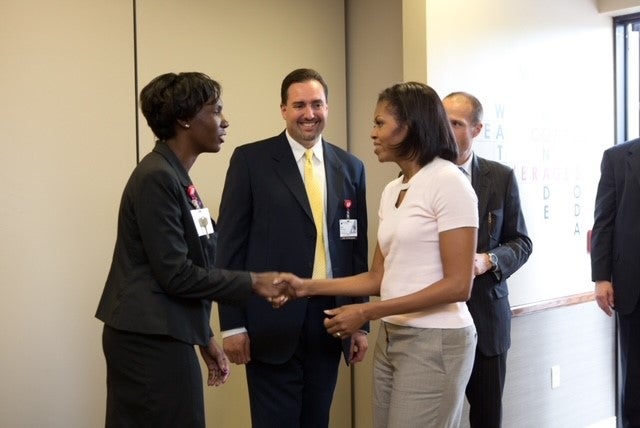The Importance of Creating a Culture where Everyone Matters

It’s a vibe.
That phrase is a perfect summation of the culture that I seek to create as a millennial leader foregoing tradition and the status quo. Our workforce is changing and so are our patients. The right culture sets the stage for an excellent patient experience. I once read a book titled The Patient Comes Second. While the title was shocking, the key message surrounded the development of employee culture. I learned and practiced the elements of creating a culture where individuals felt seen, heard and valued – where position didn’t matter and we were all people in this great field doing amazing work.
My first role as a leader was in 2008 at The Medical Center of Aurora. It was there that I learned so much about myself and what truly matters to individuals at work. I remember during our lunchtime, over a span of two hours, leaders from across the system - the chief financial officer, nurse directors, HR leaders, and others – would weave in and out talking about movies and our families. It was a whole vibe, and a culture I knew I wanted to recreate. I was once asked what I wanted my legacy to be as an executive. After a bit of thought, I replied that I wanted to be remembered as an advocate. An advocate for the team so that I can remove barriers from their work. An advocate for patients to get the best from our teams. An advocate to create spaces that promote healing for our workforce and our community.

Roberta Tinch with Michelle Obama in August 2012 at The Medical Center of Aurora.
I joined Inova Mount Vernon Hospital (IMVH) as president in September 2019, just six months before our world changed. I was excited about advancing my career but also looked forward to supporting this great team and building a new culture with them. I remember thinking about all the ways I had led in the past to develop culture – to create that vibe. Then came March 2020 and my status quo changed. We were all quarantined and separated. How does a leader create culture in the loss of physical proximity, in the palpable presence of fear and absence of visible facial expressions? YOU SHOW UP! My team was showing up every day – despite the fear, despite the exhaustion, they were there – caring for our patients and each other. The small acts of being present can signify I am here with you. The twinkle in one’s eyes can say, “I’m happy to be with you.”
Over the last few years, I have put increasing energy into creating a vibe at IMVH. This included a gratitude campaign in November 2020 in which team members paused to write what they were grateful for and those notes were read at shift huddle. The most memorable was a hospital-wide dance contest in which departments recorded their best dance moves because we were celebrating joy at work! Culture will be created one way or another. A leader’s responsibility is to create the right culture that enables team members to thrive and creates excellent patient outcomes every day.
Roberta Tinch is the president at Inova Mount Vernon Hospital; and vice president and administrator at Inova Musculoskeletal Service Line.
